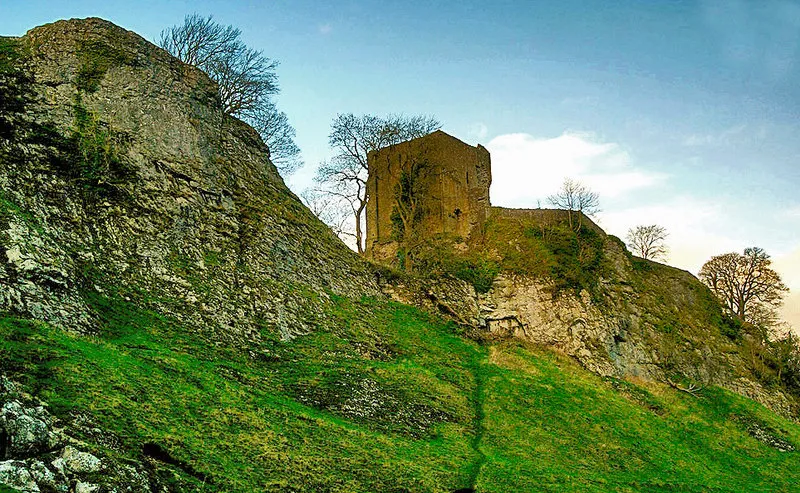Discovering Peveril Castle
Peveril Castle, also known as Castleton Castle or Peak Castle, stands as a ruined 11th-century fortress. It overlooks the village of Castleton in Derbyshire, England. This castle served as the main settlement, or caput, of the feudal barony of William Peverel. Founded between the Norman Conquest of 1066 and its first mention in the Domesday Survey of 1086, it holds a storied past.
Get your dose of History via Email
A Strategic Stronghold
William Peverel held lands in Nottinghamshire and Derbyshire as a tenant-in-chief of the king. The town of Castleton emerged as the barony’s economic center. Peveril Castle offers stunning views across the Hope Valley and Cave Dale.
Royal Confiscation and Visits
William Peverel the Younger inherited his father’s estates, but King Henry II confiscated them in 1155. While under royal control, Henry II visited the castle in 1157, 1158, and 1164. The castle’s garrison increased during the Revolt of 1173–1174. It grew from a porter and two watchmen to a force led by twenty knights.
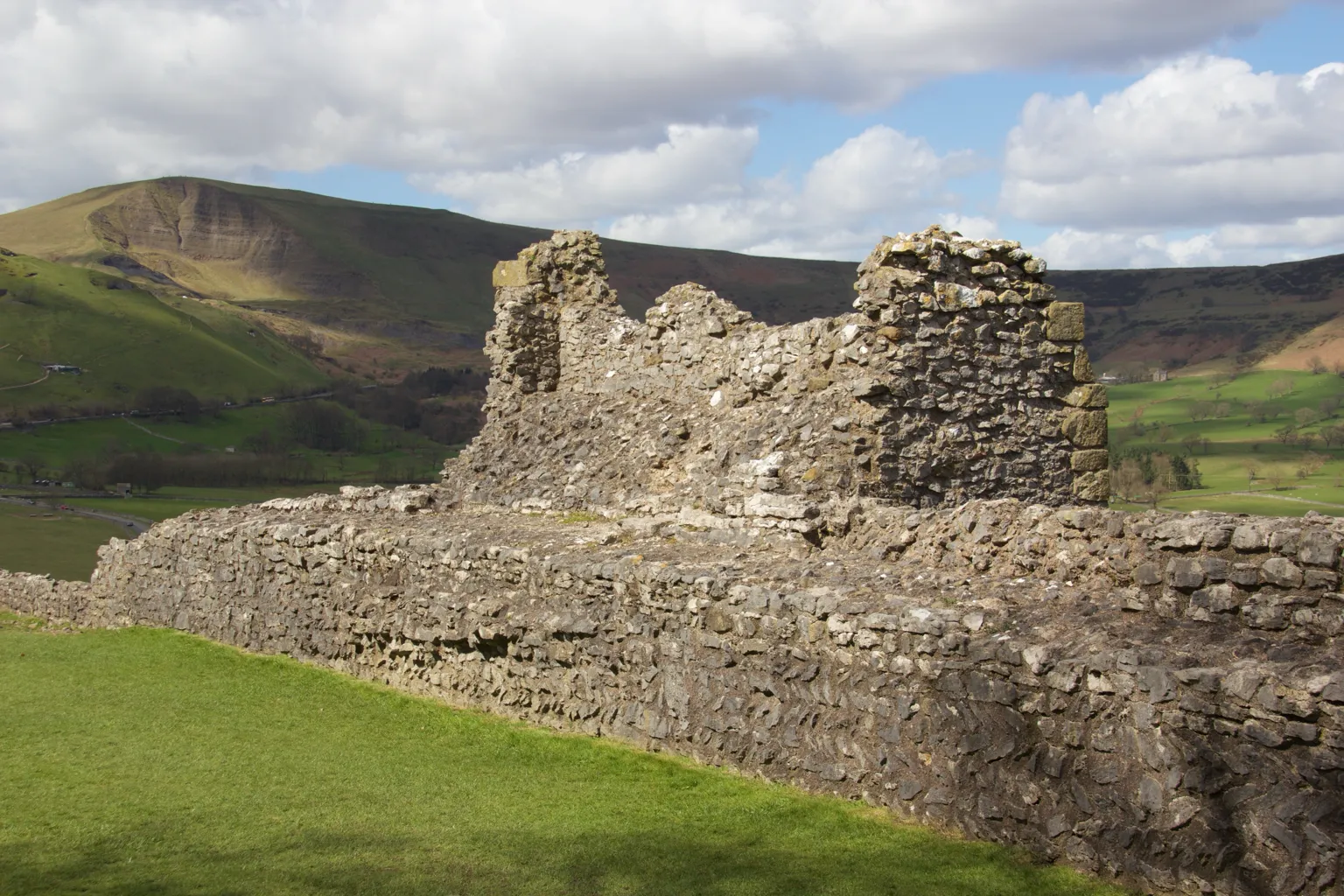
Transfer of Ownership
In 1199, William de Ferrers, the fourth Earl of Derby, paid 2,000 marks for the Peak lordship. However, the castle stayed under royal control. In 1216, King John granted the castle to William de Ferrers. The castellan initially refused to relinquish control but eventually capitulated without a battle.
Return to the Crown
In 1223, the castle returned to royal control. The 13th century saw periods of building work, establishing the castle’s final form by 1300. John of Gaunt, Duke of Lancaster, later owned the barony and began the castle’s decline. He stripped materials for reuse, marking its descent into ruin.
Decline and Ruin
From John of Gaunt’s time to the present day, the Duchy of Lancaster has owned the castle. By 1609, Peveril Castle was described as “very ruinous and serveth for no use.” Sir Walter Scott featured the castle in his novel “Peveril of the Peak,” adding to its historical allure.
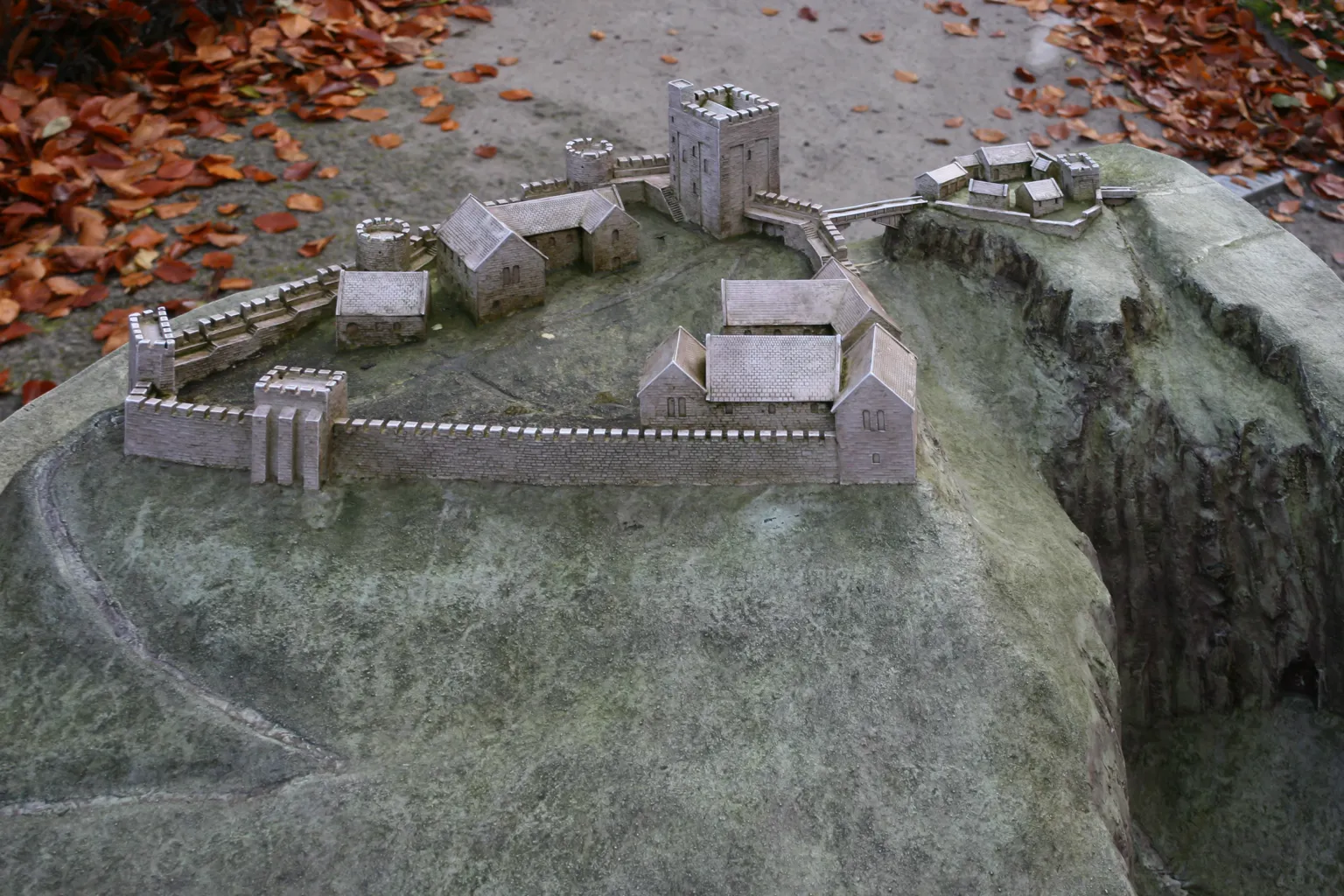
Historical Significance
Peveril Castle stands on a limestone outcrop, overlooking Hope Valley. The valley, rich in mineral resources like lead, held strategic importance. The castle’s founder, William Peverel, was a follower of William the Conqueror. He gained lands for his support during the Norman Conquest.
The Norman Conquest
William Peverel received the castle at Nottingham in 1068. By 1086, he had become a powerful landowner, with holdings in Nottinghamshire and Derbyshire. Peveril Castle, recorded in the Domesday Book, is the only castle in Derbyshire mentioned in the survey.
Architectural Features
Peveril Castle’s keep dates from around the 12th century. The keep, built in stone, replaced the initial timber structure. William Peverel relied on royal favor to maintain his power and control over the district of Hope.
Henry II’s Reign
King Henry I granted William Peverel control over the Peak. The castle became an important administrative center, collecting taxes for the area. William Peverel the Younger succeeded his father in 1114 but faced challenges during The Anarchy.
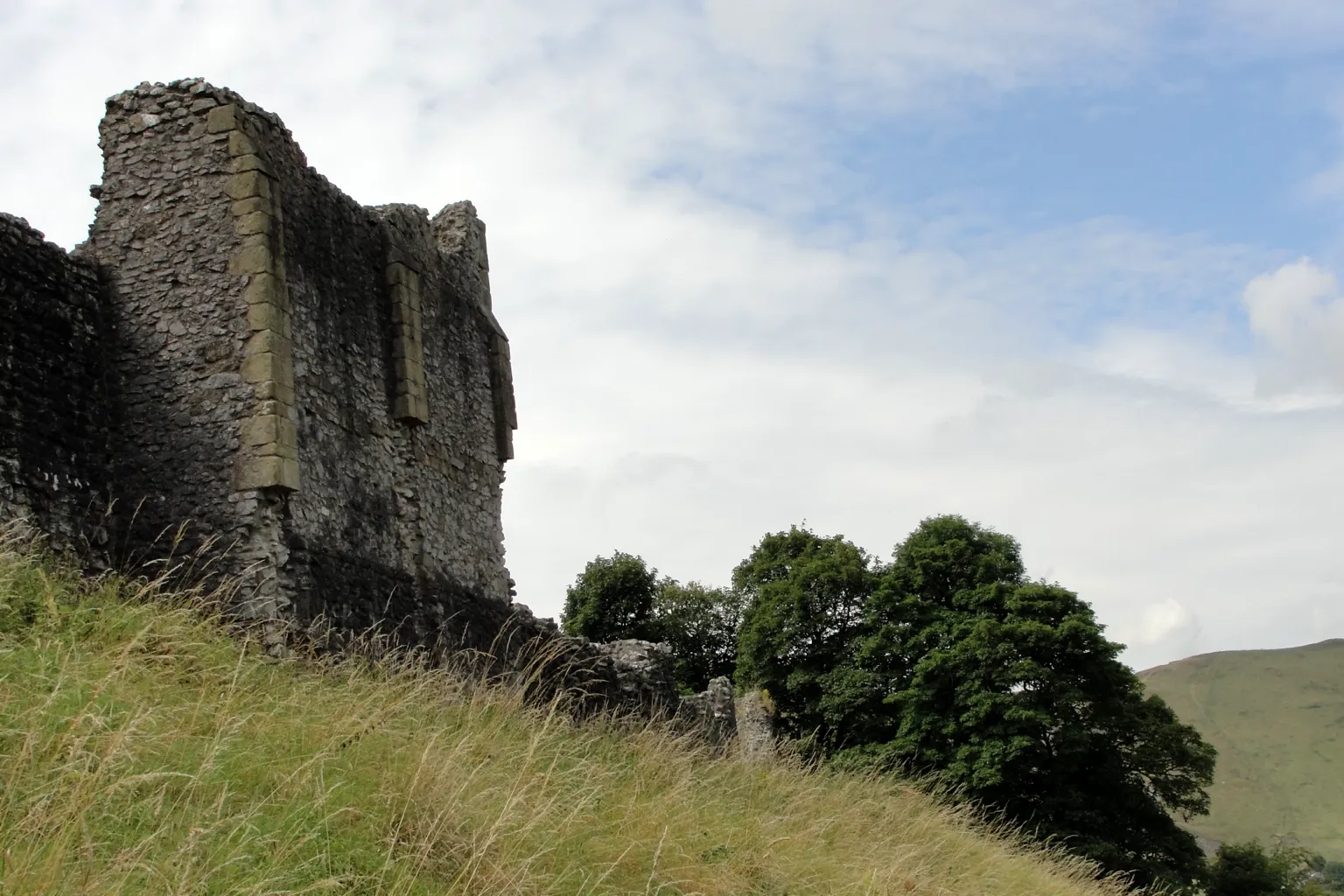
Political Turmoil
Peverel’s fortunes declined after supporting the losing side in the civil war. King Henry II accused him of treachery and confiscated his estates. The castle became the administrative center of the Forest of High Peak under royal control.
Visits by Henry II
Henry II visited Peveril Castle three times during his reign. He hosted King Malcolm IV of Scotland there in 1157. The king spent significant sums on building work at Peveril and other castles during the Revolt of 1173–1174.
Richard the Lionheart and King John
Richard the Lionheart granted the lordship of the Peak to his brother John. John later became king and sold the lordship to William de Ferrers. Despite John’s support, the castellan refused to surrender the castle until forced.
Henry III’s Rule
King Henry III came to the throne in 1216. Although Bolsover fell to Ferrers’ forces, Peveril was likely surrendered without assault. The Crown maintained control of Peveril Castle, and significant building work occurred in the 13th century.
The Decline Under John of Gaunt
John of Gaunt, the richest nobleman in England, owned Peveril Castle in the 14th century. He decided not to maintain it, stripping materials for reuse elsewhere. The castle’s administrative functions moved, leading to its decline.
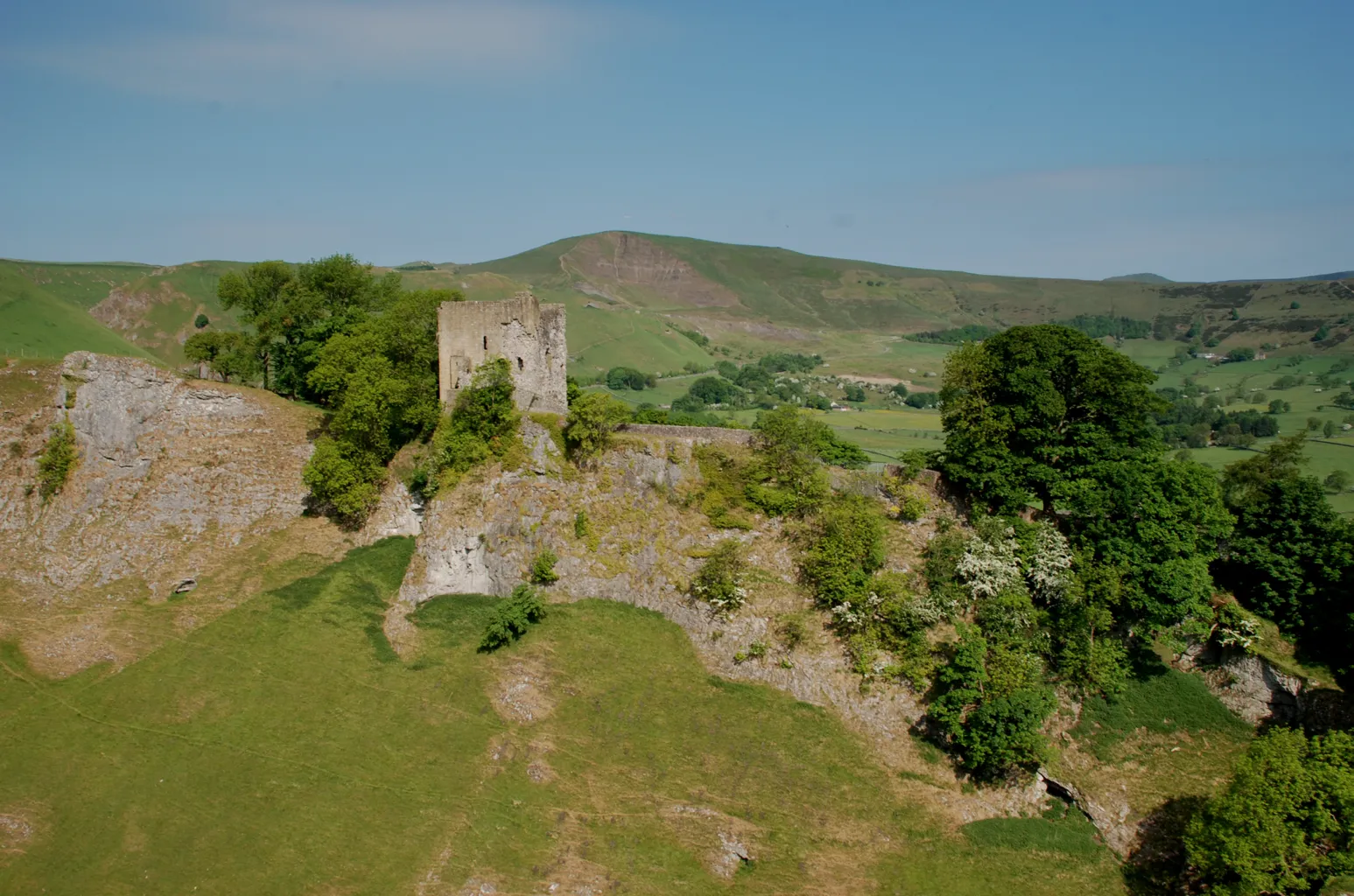
Abandonment and Ruin
By the 15th century, Peveril Castle had become less important. A survey in 1561 revealed its decay, and it was abandoned. The castle hosted local courts until 1600, and a 1609 survey described it as ruinous.
Modern Era and Preservation
With the advent of railways in the 19th century, the area became a tourist attraction. The Duchy of Lancaster undertook maintenance to prevent further deterioration. In 1932, the Duchy gave custody of the castle to the Office of Works.
Peveril Castle Today
Today, English Heritage cares for Peveril Castle. The surrounding landscape, protected as a national park since 1951, adds to its allure. Peveril Castle is a scheduled monument and a Grade I listed building. It remains an important medieval landmark in the Peak District.
Architectural Details
Peveril Castle, roughly triangular, sits atop a hill overlooking Hope Valley. Its prominence symbolized the builder’s power. The castle’s curtain walls and keep show multiple phases of construction.
Conclusion
Peveril Castle, with its rich history and stunning location, continues to fascinate visitors. From its founding after the Norman Conquest to its decline under John of Gaunt, the castle’s story reflects England’s turbulent past. Today, it stands as a testament to medieval architecture and history, cared for and preserved for future generations.
Sources: Wikipedia

